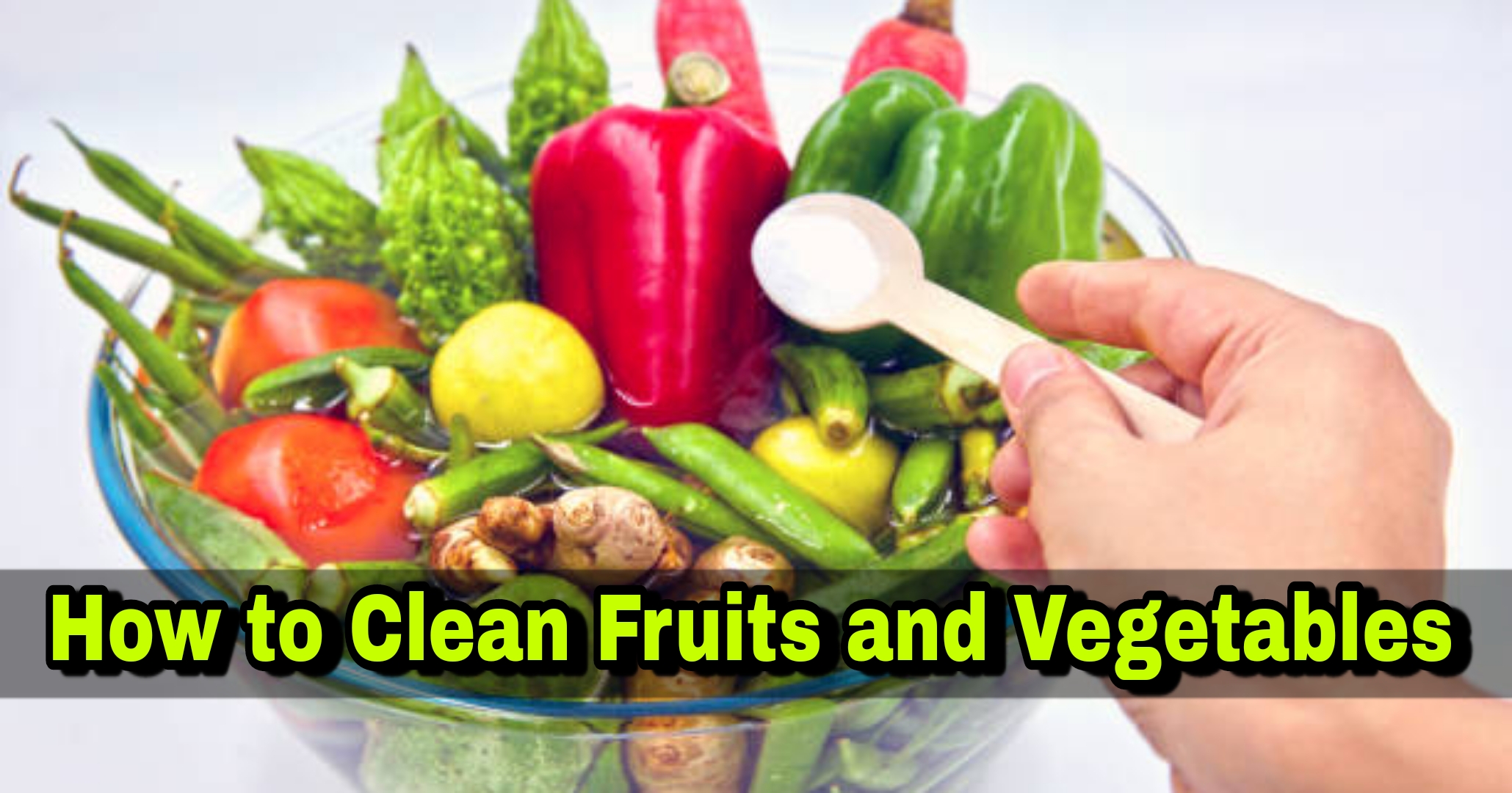Safely Clean Fruits and Vegetables: A Simple Baking Soda Solution
In our modern world, ensuring the cleanliness of fruits and vegetables has become more crucial than ever. Pesticides, dirt, and potential contaminants can lurk on the surface of our produce, making proper cleaning an essential step in food preparation.

Why Cleaning Produce Matters
Every piece of fresh produce goes through multiple stages before reaching your kitchen:
– Agricultural processing
– Transportation
– Handling by multiple people
– Storage in various environments
These stages expose fruits and vegetables to numerous potential contaminants, including:
– Pesticide residues
– Harmful bacteria
– Dirt and soil
– Surface chemicals and waxes
The Baking Soda Cleaning Method: A Natural Solution
What You’ll Need:
– Fresh fruits and vegetables
– Baking soda
– Clean water
– Large bowl or clean sink
Step-by-Step Cleaning Process
1. Initial Preparation
– Wash your hands thoroughly with soap and water
– Gather your produce
– Inspect for any visible damage or excessive dirt
2. First Rinse
– Rinse produce under cool, running water
– Gently remove surface dirt
– For leafy greens, carefully separate leaves
– Use a soft brush for firmer produce like potatoes or carrots
3. Baking Soda Soak
– Measure 1 teaspoon of baking soda per cup of water
– Create a solution in a clean bowl or sink
– Sprinkle baking soda over the produce
– Submerge fruits and vegetables completely
4. Soaking Time
– Allow produce to soak for 5-7 minutes
– Gently agitate occasionally
– Baking soda helps break down waxy coatings and pesticide residues
5. Final Rinse
– Remove produce from baking soda solution
– Rinse thoroughly with clean, fresh water
– Ensure no baking soda residue remains
Scientific Benefits of the Method
Research has shown that this cleaning method:
– Removes up to 96% of surface pesticides
– Eliminates harmful bacteria
– Reduces chemical residues
– Preserves produce quality
Pro Tips for Optimal Cleaning
– Delicate Produce: Handle soft fruits like berries with extra care
– Firm Vegetables: Use a soft brush for root vegetables
– Drying: Pat dry with clean towels
– Timing: Clean just before consumption for best results
Important Considerations
– Not all produce accumulates chemicals equally
– Organic produce may have fewer pesticide residues
– Some fruits and vegetables are more porous than others
Safety Precautions
– Always use clean water and utensils
– Wash hands before and after handling produce
– Store cleaned produce properly
– Check produce for signs of spoilage
Environmental and Health Benefits
This method offers multiple advantages:
– Chemical-free cleaning
– Environmentally friendly approach
– Cost-effective solution
– Promotes healthier eating habits
Conclusion
Cleaning your fruits and vegetables doesn’t have to be complicated or expensive. This simple baking soda method provides a natural, effective way to ensure your produce is clean, safe, and ready to eat. By taking a few extra minutes to prepare your food, you’re investing in your health and enjoying the purest flavors nature has to offer.
 Remember: Clean produce isn’t just about appearance—it’s about protecting yourself and your loved ones from potential contaminants while enjoying fresh, nutritious foods.
Remember: Clean produce isn’t just about appearance—it’s about protecting yourself and your loved ones from potential contaminants while enjoying fresh, nutritious foods.


Whats Taking place i am new to this, I stumbled upon this I have discovered It positively useful and it has helped me out loads. I hope to give a contribution & aid other customers like its helped me. Good job.
I truly enjoy reading through on this internet site, it has fantastic posts. “He who sees the truth, let him proclaim it, without asking who is for it or who is against it.” by Henry George.
Howdy, i read your blog occasionally and i own a similar one and i was just wondering if you get a lot of spam responses? If so how do you protect against it, any plugin or anything you can suggest? I get so much lately it’s driving me mad so any help is very much appreciated.
Great site! I am loving it!! Will be back later to read some more. I am bookmarking your feeds also.
I am extremely inspired together with your writing talents as well as with the format on your blog. Is that this a paid theme or did you customize it yourself? Either way stay up the nice quality writing, it’s uncommon to peer a nice weblog like this one nowadays..
I like this site so much, saved to favorites. “American soldiers must be turned into lambs and eating them is tolerated.” by Muammar Qaddafi.
Hi there very cool website!! Guy .. Excellent .. Superb .. I will bookmark your site and take the feeds additionallyKI am satisfied to search out so many useful info here within the put up, we want work out more techniques on this regard, thanks for sharing. . . . . .